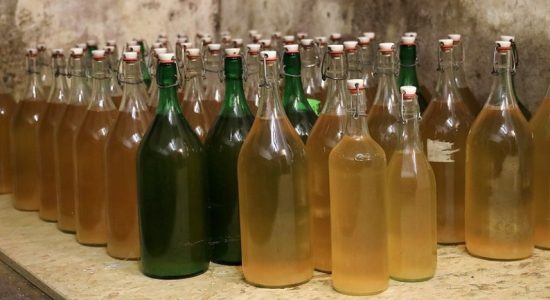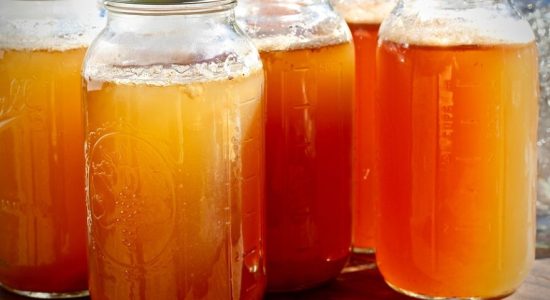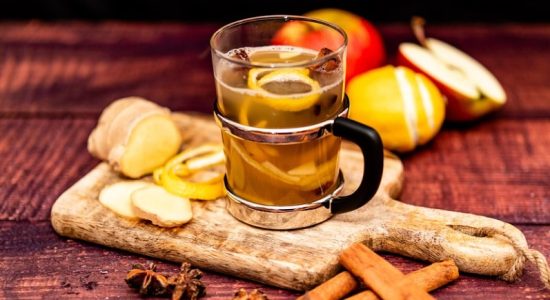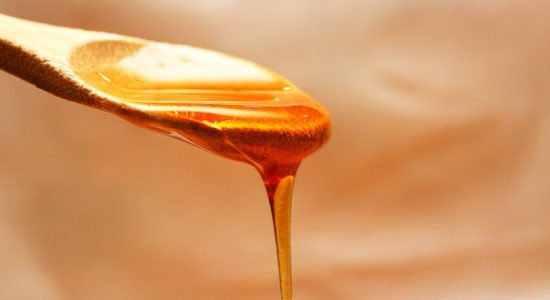11+ of the Best Mead Recipes for Easy Mead Making
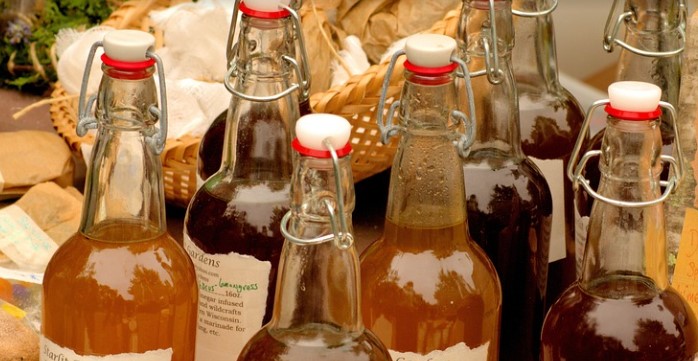
Once you start making mead at home, you can consider dozens of recipes for distinct flavors or unique characteristics. However, you should choose ingredients suitable for easy mead making, especially due to the long fermentation process and aging requirements for most recipes.
The best mead recipes for easy mead making are dry, medium, and sweet concoctions by altering the proportion of honey and adding one or more ingredients for preferred tastes, such as berries and fruits (dried, fresh, or juiced), herbs, malts, spices, syrups, teas, etc.
Mead connoisseurs and homebrewers don’t have identical or similar personal preferences. Any recipe is unlikely to please all and sundry. That said, I’m sharing all of the best recipes that are not complicated, demanding, or risky. Read on to explore over 11 easy mead making recipes.
1. Dry, Medium, and Sweet Mead
I’m sure you are familiar with plain mead that uses only the following ingredients:
- Honey
- Water
- Yeast
Also, you are probably aware that plain mead has different profiles, most notably the following:
- Dry
- Medium
- Sweet
The difference among these concoctions is primarily due to the content or proportion of honey in regard to the quantity of water. I’m keeping aside the other influencing factors for now, such as:
- Additional ingredients
- Aging and fermentation
- Quality or type of honey
- Type of yeast (alcohol tolerance)
So, the best and easiest recipes for plain meads are mainly about tweaking the proportion of honey per gallon or unit of water and using a type of yeast for the desired alcohol by volume content. The other staple requirements remain the same, such as your:
- Bottles and tools
- Fermenting carboys
- Sterilizing essentials
Here are the best and easiest recipes for varying levels of sweetness in plain or traditional mead for every 1 gallon (3.78 liters) of water:
| Parameters | Dry Mead | Medium Mead | Sweet Mead |
| Honey | 2 lbs (900 grams) | 3 lbs (1.36 kg) | 4 lbs (1.81 kg) |
| Yeast | ~0.07 oz (2 grams) | ~0.08 oz (2.5 grams) | ~0.10 oz (3 grams) |
| Fermentation | ~4 weeks | 4 to 6 weeks | 6 to 8 weeks |
| Racking | Fortnight or later | 1 month or after | ~2 months and after |
| Specific Gravity | <1.010 | ~1.01 to ~1.025 | >1.025 |
You can expedite the primary fermentation process for all varieties of mead with yeast nutrients. The most common remedy is yeast assimilable nitrogen (YAN), such as diammonium phosphate (DAP). Up to 0.03 oz (1 gram) of DAP or yeast nutrient may suffice per gallon of mead.
2. Hydromel, Quick, or Short Mead
Plain meads are easy to make but aren’t the fastest alcoholic homebrews you can ferment, bottle, or age, unlike beer. If you can’t spare one month or longer for fermentation, primary and secondary, and the subsequent aging period post bottling, consider the following meads:
- Draft mead
- Hydromel
- Quick mead
- Session mead
- Short mead
The 5 terms are essentially the same kind of mead, with the following attributes:
- Alcohol by volume is much lower than 8%.
- The mead is dry and hence not sweet at all.
- The mead can be still or carbonated (sparkling).
Here’s the recipe and the key parameters of making hydromel, quick, or short mead:
- Honey: 1 lb (450 grams) for 1 gallon (3.78 liters) of water
- Dry mead yeast: 0.05 to 0.06 oz (1.5 to 1.75 grams) per gallon
- Fermentation: 10 to 20 days, with or without racking
- Aging: not exactly necessary since there’s little alcohol and sugar
The rest of the process of making hydromel is the same as dry mead, such as the following:
- You must stir the honey to dilute and mix it thoroughly in filtered water.
- You should add yeast and nutrients proportionally to the mead must.
- Ferment in a dark place but at a warm temperature for yeast to thrive.
- If you bottle and store short mead, choose a cool, dark, and dry space.
3. Sack Mead, a Sweeter Dessert
Suppose you don’t like dry mead. A conventional sweet mead may be your favorite. But some people look for an even sweeter concoction, much like a dessert wine. That’s what sack mead is.
Here’s an easy sack mead recipe per gallon of filtered water:
- Honey: 5 lbs to 6 lbs (2.26 kg to 2.72 kg)
- Yeast (high alcohol tolerance): ~0.10 oz (3 grams)
- Primary fermentation: 8 to 12 weeks
- Secondary fermentation: 4 to 8 weeks
- Racking phases: 2 to 4 times, as required
- Specific gravity: greater than 1.025 (post fermentation)
- Bottling: in ~6 to 8 months from the start of fermentation
- Aging: 6 months to 1 year, or longer if you can wait
You may need to rack sack mead once or twice during both primary and secondary fermentation phases. Assess the quantum of lees or the sediment in the carboy or fermentation container to decide if you should rack your sack mead.
The alcohol by volume of all meads depends on the type of yeast you use. If you use yeast with an alcohol tolerance of 18%, that’s the approximate ABV you will achieve in sack mead, and the remaining sugars will make the dessert drink sweet. A lower ABV will make sack mead sweeter.
Exercise caution when you make sack mead for the first time because excess sugar can lead to intense secondary fermentation. Don’t rack your sack mead in bottles or ordinary containers. Use carboys with airlocks to prevent fermenting mead from exploding, like beer, in some cases.
4. Carbonated or Sparkling Mead
You can make carbonated or sparkling mead with any recipe, including the five variations that I have shared until now:
- Dry
- Medium
- Sweet
- Hydromel
- Sack
The carbonation process begins after your mead has undergone the fermentation phases, both primary and secondary. Plus, your mead may be racked once or more, depending on the recipe or quantum of lees. You should carbonate the mead just before bottling it from the carboy.
The same carbonation approach works for most recipes, but the quantum of honey you add to the fermented and racked mead will depend on the alcohol by volume, residual yeast, and sweetness. Generally, adding around 1 oz (~30 ml) of honey per gallon of mead is sufficient.
You must use a sterilized stirrer to mix the added honey in the fermented and racked mead. You should also get champagne bottles to transfer the carbonating mead. Don’t use standard bottles for sparkling mead because they may explode or shatter as carbon dioxide builds up inside.
Here’s a video about the best bottles for homebrewing:
5. Mead With Caramelized Honey
Mead made with caramelized honey is known as bochet, which is one of the popular recipes among both beginners and connoisseurs, primarily for the following reasons:
- Darker color
- Richer aroma
- Nuttier flavor
You may use only caramelized honey for the bochet. The exact proportion can vary, but usually, ~3 lbs (1.36 kg) of caramelized honey per gallon of mead must work well. If you plan to add some regular honey, reduce the quantity of the caramelized portion by the same quantity.
Here’s how you should caramelize honey to make bochet mead:
- Get a large pot or vessel to heat the quantity of honey. An oversized pot is better for heating honey because it will expand and foam up while cooking.
- Pour the honey and cook it on high heat with frequent stirring until it just begins to boil. Lower the heat or turn your stove to simmer and continue to cook the honey.
- Stir as and when necessary to prevent burning the honey, and keep checking the extent of caramelization. You can track the color changes every five to ten minutes.
- Stop cooking when the honey has caramelized to your preferred color and texture. Generally, you will need around 20 to 30 minutes to caramelize 3 lbs (1.36 kg) of honey in a 3 to 5 gallons (11.35 to 18.9 liters) pot.
Allow the caramelized honey to cool a little before adding the water, and then put the yeast into the must when its temperature is under 95°F (35°C). The subsequent fermenting and racking processes are similar to the plain or traditional meads.
6. Mead With Apple Juice or Cider
If you love apples, you will likely enjoy homemade cyser. Mead infused with any of the following is called cyser:
- Apples: clean, fresh, and cut into pieces
- Apple juice: fresh (preferable) or purchased
- Apple cider: homemade or branded
Always scrub and wash fresh apples under running water to clean and sanitize them. Don’t use bruised, damaged, or rotting fruits. The quantity of apples, cider, or juice per gallon varies due to the following considerations:
- You can add around 0.13 gal (500 ml) of apple juice or cider per gallon of mead if you’re aiming for a light cyser that is still mostly honey and water.
- Increase the quantity of apple cider or juice if you want a richer cyser without changing the honey and water content.
- You may use 2 to 3 apples, cut into 4 to 8 pieces, with the skin on, per gallon, and add to the must before you put in the mead yeast.
- You must alter these quantities if you use flavored honey and other ingredients, subject to the desired alcohol by volume, flavor, dryness, sweetness, etc.
If you use store-bought apple juice or cider, choose a variety that has little to no preservatives. A lot of preservatives may stop the fermentation process, which isn’t uncommon for mead or wine. Ideally, you should make your own apple juice or cider.
I haven’t tried using hard cider for a cyser. But here’s how you can make hard cider, should you choose to experiment with it instead of fresh apple or juice.
7. Maple Syrup and Honey Mead
One of the most delightful mead recipes uses maple syrup with honey, creating a unique drink called acerglyn. You can add maple syrup in the same way as apple cider or juice. But you will need to modify the honey content proportionally unless you want a super sweet acerglyn.
Suppose you want to make the acerglyn variant of plain medium-sweet mead using 3 lbs (1.36 kg) of honey per gallon (3.78 liters) of water. In such a case, you can reduce the honey content to ~2 lbs (0.90 kg) and use 1 lb (0.45 kg) of maple syrup for 1 gallon (3.78 liters) of mead.
If you have flavored honey, such as orange blossom, you can reduce its content a tad further and increase the maple syrup content proportionally. However, these modifications are really about your personal preference or the flavor and taste you want in your mead, err, acerglyn.
8. Mead With Fruits, aka Melomel
Like using cider or fresh apples for cyser, you can add one or more fruits to make a distinct type of mead called melomel. Always use fresh fruits after cleaning and washing them. Cut a chosen fruit into smaller pieces and add everything to the mead must, i.e., the pulp, rinds, skins, etc.
Here are a few fruits you may try:
- Berries
- Cherries
- Citrus fruits
- Mangoes
- Oranges
- Raisins
9. Mead With Grapes (Honey Wine)
I am listing the mead with grapes recipe separately from melomel because it has its own name, pyment. This recipe is essentially for honey wine, where plain mead and grapes or grape juice ferment simultaneously in the carboy. Note that you don’t necessarily need to use wine grapes.
Add fresh grapes or grape juice in similar proportions as you would infuse other fruits, such as apples, oranges, etc. but allow grape mead or pyment to age a little longer, both while racking and after bottling. Like wine, grape mead or pyment gets immensely better with age.
Most meads age well in 6 months to 1 year of bottling. Mead with grapes is likely to age best if you let it be for around or up to 2 years before drinking.
10. Flavored, Mulled, or Spiced Mead
You can add one or more herbs and spices to any plain mead recipe and make metheglin. One distinct variety uses spicy peppers, and such a mead is known as capsicumel. But these names aside, I recommend trying only a few of the common spices so that you can manage the flavor.
Here are a few ingredients you can safely add to any of the plain mead recipes I have discussed above:
- Allspice
- Anise seed
- Cardamom
- Cinnamon
- Clove
- Galangal
- Ginger
- Nutmeg
- Peppermint
- Tea
Don’t use too many spices in one recipe unless you have tried most of them separately already. Otherwise, you won’t really know the exact impact of many of those ingredients in the chosen proportions of honey and water and the type of yeast you use for your plain mead recipes.
Also, use these ingredients in nominal quantities based on your preference. Here are a few examples:
- ~1/4 teaspoon of a spice (ground) per gallon of mead if you use two or more of them. Change the proportions for any spice that you want to have a dominant or subtle effect.
- Up to 1/2 teaspoon of a spice per gallon of mead if you don’t use any other. Some spices can be used a bit more, especially if you like them, such as cinnamon.
- Use teas in 1/4 cup increments per gallon of mead and crush the spices you get as roots or seeds. Decrements and increments can be in 1/4 teaspoon per gallon or 1/2 if you use only one spice.
Use spices and teas with plain mead recipes before trying them for the following:
- Acerglyn
- Bochet
- Cyser
- Melomel
- Pyment
11. Mead With Malt, aka Honey Beer
Last but not least, you can make mead with malt, which is known as braggot, ala honey beer. A braggot may include or exclude hops. Also, you can use sweet malts if you don’t like dry mead. Select a malt you like and add it to the must before putting in the mead yeast.


